Publication - Research and analysis
Scottish Economic Bulletin July 2024
Provides a summary of latest key economic statistics, forecasts and analysis on the Scottish economy.
Consumer Activity
Consumer sentiment has strengthened back into positive territory during Q2 2024.
Consumer Sentiment
- The Scottish Consumer Sentiment Indicator reflects how households think the economy is performing, how secure they feel about their household finances and how relaxed they feel about spending money.
- Consumer sentiment has continued to strengthen in the first half of 2024 with quarterly data showing the indicator rose to 2.4 in Q2 2024, up 14.2 points over the past year and is at its highest level since the end of 2021.[14]

- The improvement in consumer sentiment over the past year reflects that consumers have been indicating, on balance, that the economy, their household financial security and their attitude to spending has been improving.
- In Q2 2024, the current economy indicator strengthened to 4.7, with the positive score indicating that for the first time since the start of 2022, consumers on balance feel the economy is performing better than the previous year.
- However, while the current household finances (-4.3) and attitute to spending (-11.8) indicators strengthened over the quarter, they remained in negative territory indicating that cost of living challenges are continueing to impact on household finances, though to a lesser extent than over the past year. Furthermore, the latest monthly data for June showed that both indicators weakened over the month itself, emphasising that the current personal finance and spending indicators continue to weigh on overall consumer sentiment and their recovery remains fragile.
- Looking to the year ahead, households increasingly expect the economy (19.5), and their personal financial security (3.6) to improve.
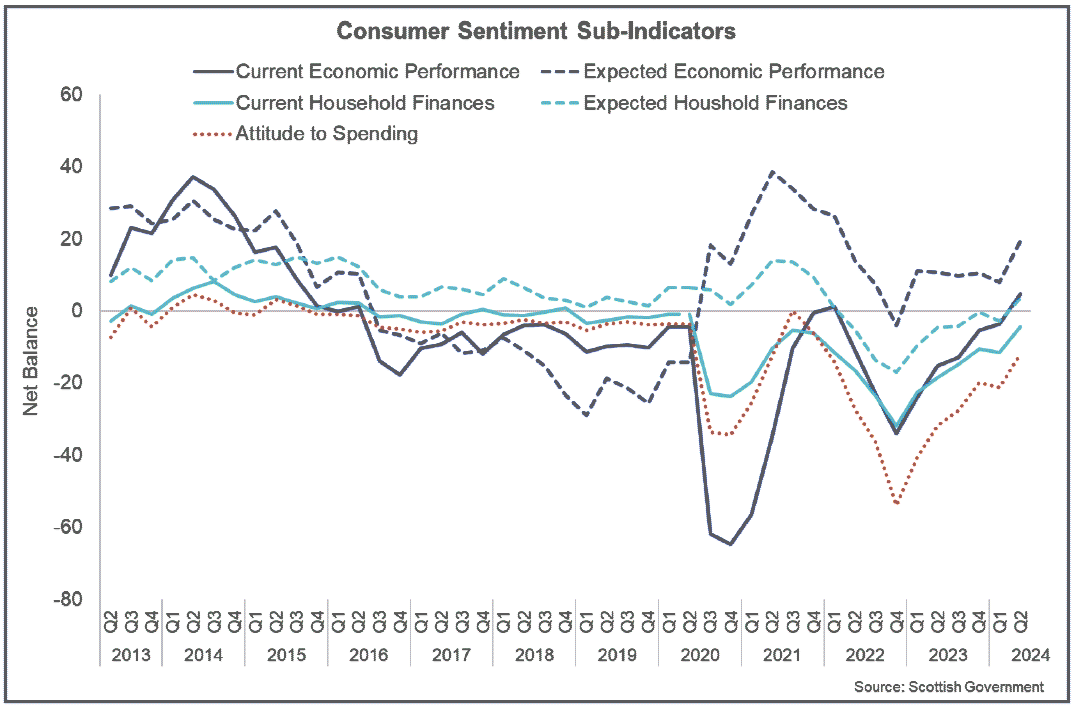
Cost of Living and Spending
- The rate of inflation has reduced significantly over the past year to its 2% target rate, however the sharp rise in cost of living and interest rates continues to impact household spending, saving and borrowing decisions as living standards are continuing to recover.
- Retail sales volumes in Great Britain have remained settled below their 2019 level over the past year, however grew 0.2% over the year to June while sales value grew 0.6%.[15]

- Similarly the change in prices and borrowing costs have had a significant impact on the amount conumers are paying for their energy costs, mortgages and other loans. In June the average monthly direct debit payment for electricity and gas was £165, down 17.4% over the year, in part reflecting the fall in the Energy Price Cap.[16]
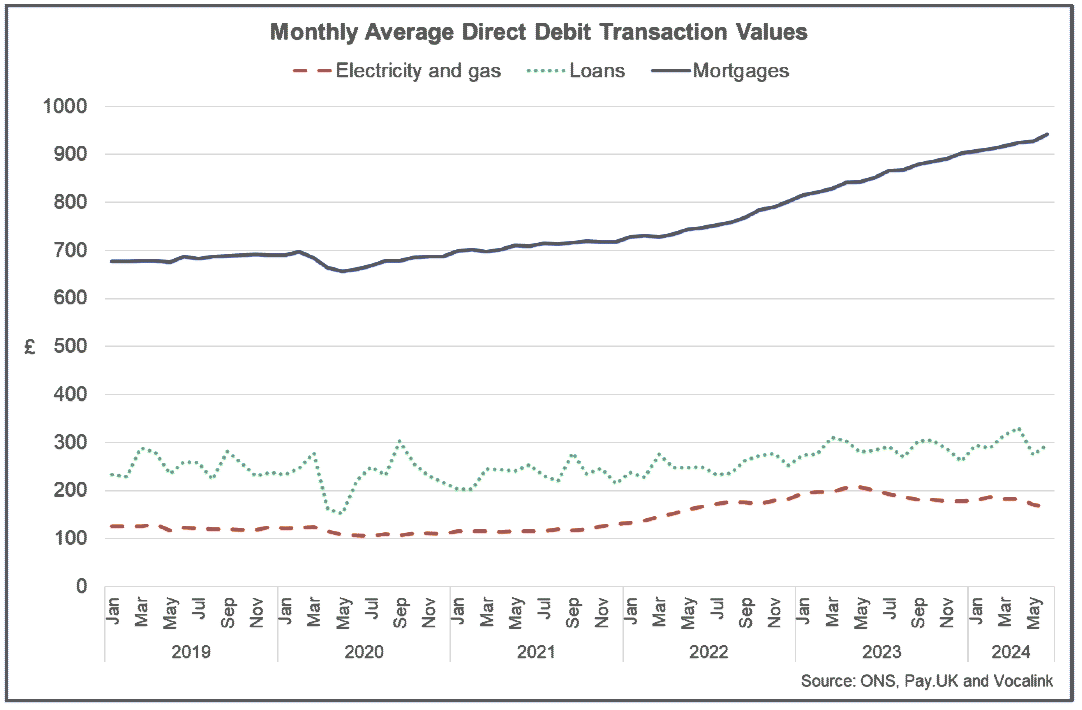
- However, the average monthly direct debit payment for mortgages was £942 in June (up 10.6% over the year) and £297 for loans (up 4.2% over the year). This in part reflects the feed through of higher interest rates to higher borrowing costs however the rate of change has stabilised as the Bank Rate remained at 5.25% from August 2023 (before being reduced to 5% in August 2024).
- The sharp increase in prices has been accompanied by an increase in the direct debit failure rate (the percentage of transactions that fail due to insufficient funds), reflecting the challenges facing some household budgets. For electricity and gas payments, the payment failure rate has risen to 2.19% in June (up from 1.72% in June 2023), while for mortgages the payment failure rate has remained more stable over the year and fell marginally to 0.95% (down from 0.98% in June 2023).
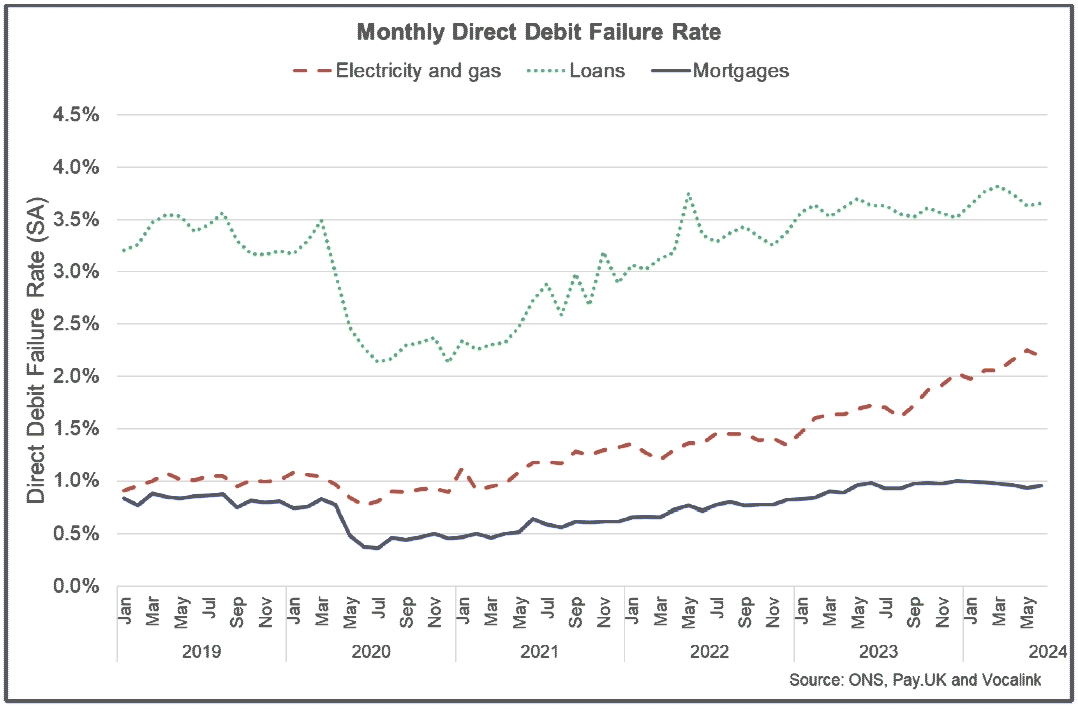
- More broadly in June, the ONS Public Opinions and Social Trends survey showed that 37% of respondents were finding it very or somewhat difficult affording energy bill payments (down from around 43% in 2022) while 42% of respondents said the same for mortgage and rent payments (up from around 30% in 2022).[17]
- The more gradual and persistent impacts of higher interest rates on mortgage payment challenges compared to energy payments reflects the sharp rise in the Bank Rate between the end of 2021 and middle of 2023 and the time it takes for the impacts of the increases to be felt at an aggregate level due to the high share of mortgages that are on a fixed rate.
- Reflecting this, the ‘effective’ interest rate – the actual interest paid – on newly drawn mortgages rose to 4.82% in June though is lower than in the second half of 2023 (average 5.06%) in part reflecting increased market expectations that interest rates would reduce in 2024. Rates on the outstanding stock of mortgages however continued to rise to 3.65% (up from 2.92% in June 2023).[18]
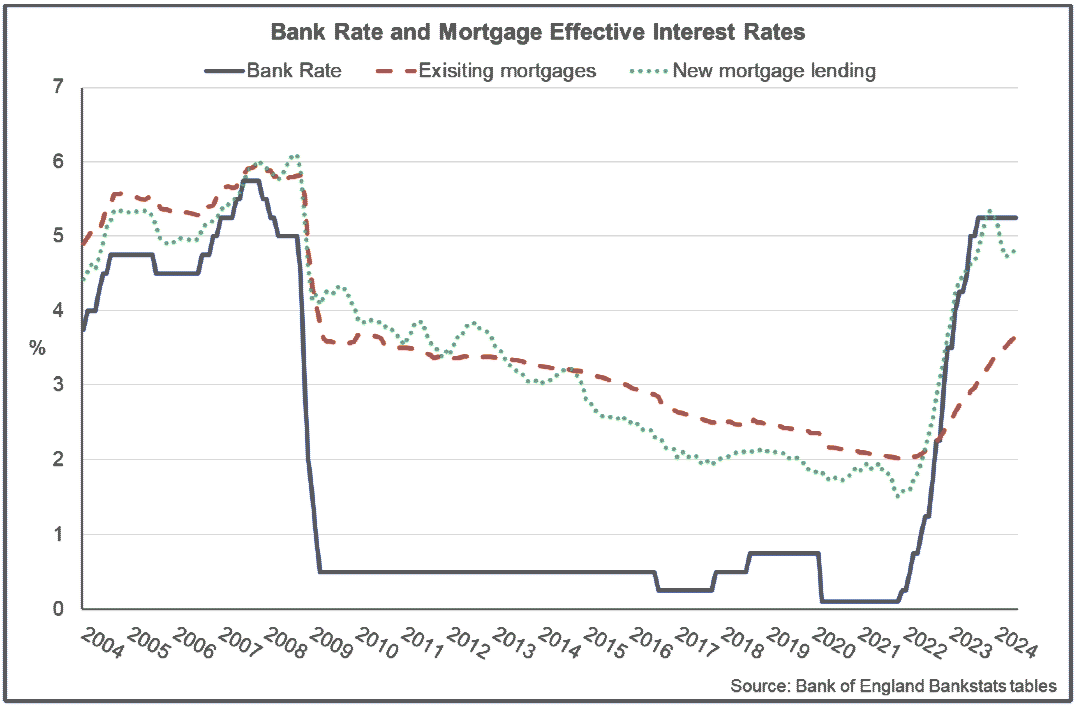
- In response to the change in cost pressures facing households, ONS Public Opinions and Social Trends survey data from June show that the most common actions people are taking in response to the increased cost of living continue to be spending less on non-essentials (60%) and shopping around more (44%). Furthermore, 41% reported using less fuel such as gas or electricity in their home and 42% reported spending less on food shopping and essentials.
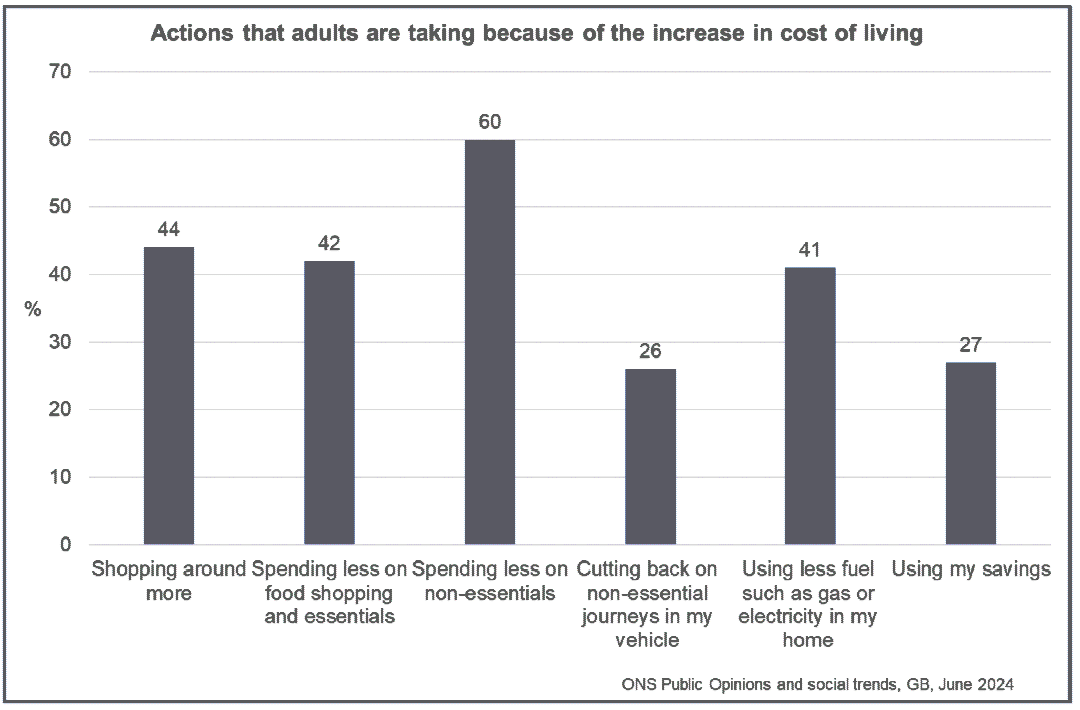
Contact
Email: OCEABusiness@gov.scot
There is a problem
Thanks for your feedback